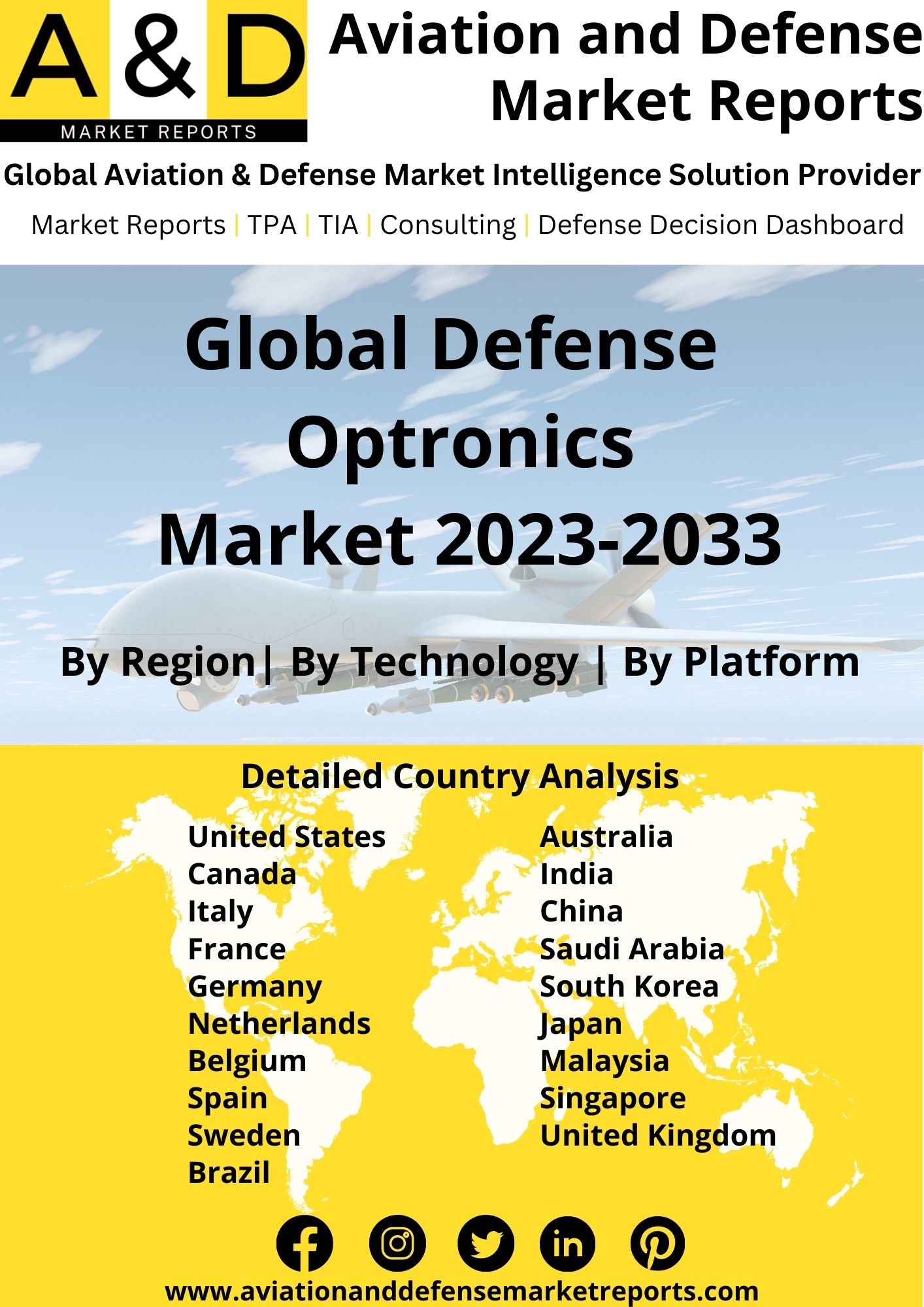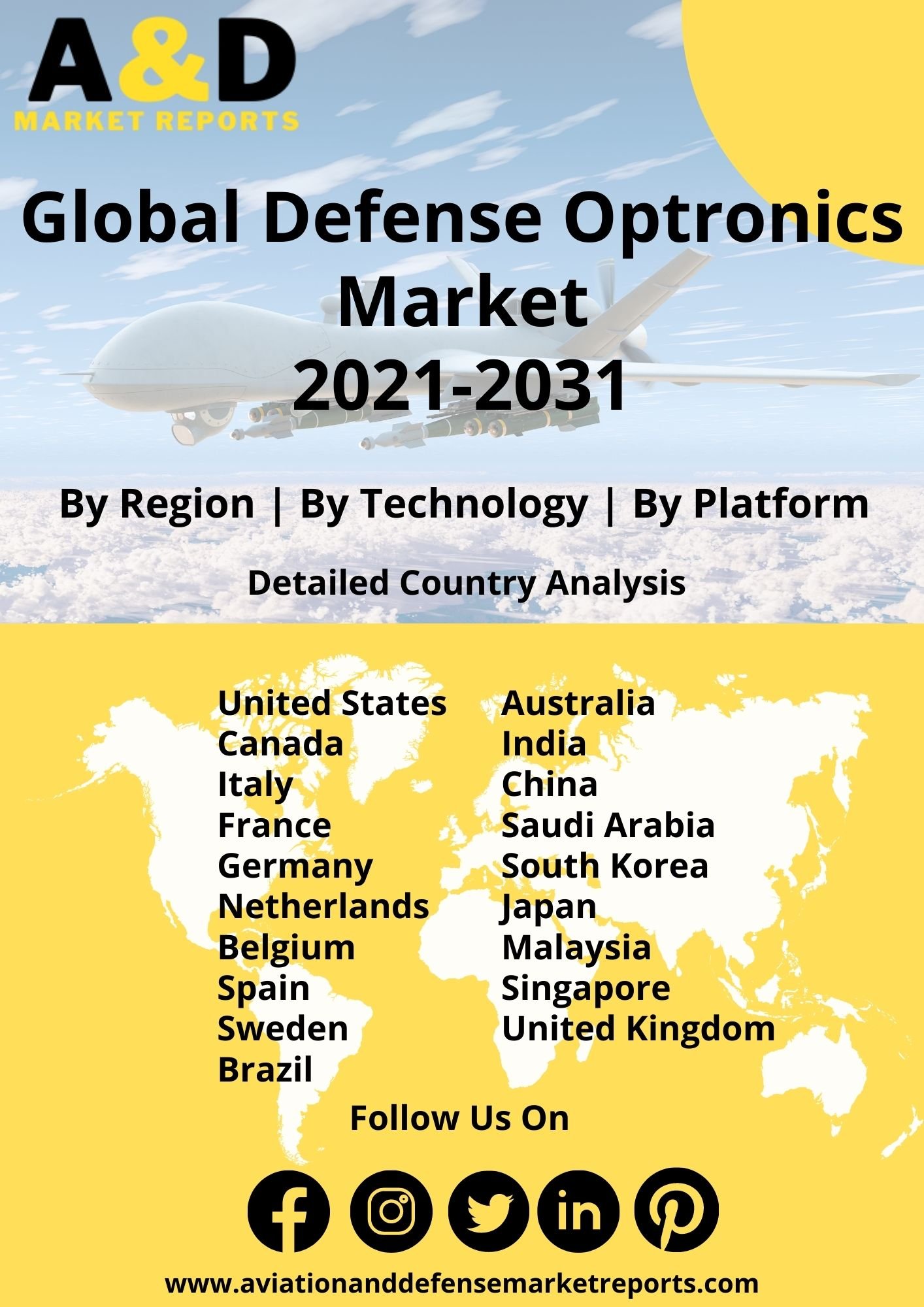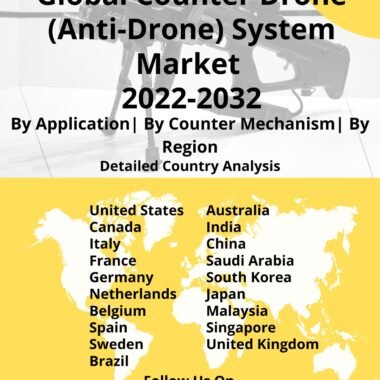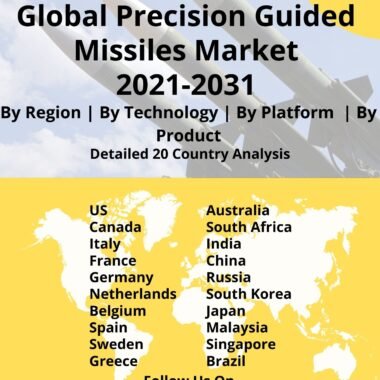Description
Global Defense Optronics Market
Frequently Asked Questions of Optronics Market
EO/IR (Electro-Optical/Infra-Red) systems are imaging systems with both visible and infrared sensors used for military or law enforcement applications. Since they cover the visible and infrared spectrums, EO/IR systems offer complete situational awareness throughout the day, at night, and in low light. Image stabilization and long-range imaging capabilities are essential components of EO/IR systems. EO/IR sensors must be able to recognize targets, follow moving targets, and assess threats from a distance and in tough environmental circumstances. They are typically mounted on aircraft or vehicles, utilized at sea, or carried by hand.
Airborne homeland security, combat, patrol, surveillance, reconnaissance, and search and rescue operations are among the common uses of EO/IR systems. Recent developments in defense optronics system market growth is estimated to offer growth opportunities. Mobile electro-optical systems (EOS) with integrated day/night, pan-and-tilt, LRF, DMC, GPS, and SW can identify people, vehicles, and other objects of interest up to 25 km away both during the day and at night, even in adverse weather and on challenging terrain.
On nearly any type of vehicle, these thermal surveillance systems can be mounted. In positions like border protection, it may be necessary to utilize a portable surveillance roof box or thermal imaging camera system to look for insurgent activity. In order to function in the most demanding conditions, integrated solutions are particularly durable. A multi-sensor electro-optical system called a commander sight was created as a stabilized panoramic sight for different weapon stations on wheeled or tracked armored vehicles.
A commander can view the whole field of action thanks to the optical sensors’ mounting atop a gyro-stabilized pan and tilt positioner. Combining sensors guarantees that the system can observe in all kinds of weather and lighting. There are three different kinds of sensors: LRF, night channel, and day channel. A zoom camera with a color and B/W mode provides day channel. A thermal camera that has been cooled provides the night channel. An eye-safe laser rangefinder is used to measure distance. To avoid any movements during gunfire, all sensors are properly set and aligned.
Major factors driving Defense Optronics Market Growth
Increasing procurement programs with respect to armored vehicles such as Main Battle Tanks, Light Tanks, and infantry Fighting Vehicles is estimated to drive the defense optronics market size. These armored vehicles will create demand for commander sights, gunner sights, and laser detection systems. One of the other drives of the defense Optronics market size will be the proliferation of UAVs for performing ISR. This will create significant demand for electro-optical systems for surveillance. Proliferation of unmanned land and naval platforms will see significant demand for remote weapon stations. These weapons stations have integrated optronics to aid the gunner in quick target detection and attack. Optronics for unmanned systems will be a key segment in the defense optronics market share.
Trends influencing the Defense-Optronics Market Size
Defense Optronics market trends, distributed electro-optical sensors alert the pilot to potential dangers from approaching aircraft and missiles. It also offers day and night vision, fire control capability, and precise monitoring of wingmen and friendly aircraft for tactical maneuvers. In the UAV (Unmanned Aerial Vehicle) surveillance system’s defense Optronics market report, constantly changing environment, multi-sensor data fusion can boost the target identification probability. Defense Optronics market analysis EO (Electro-Optical) and radar data are used to increase the likelihood of detecting targets compared to the use of a single sensor. Defense Optronics market analysis, advanced multi-mode electro-optical sensors will be driving the defense Optronics market growth.
Market Forecast & Dynamics
The increase in defense spending will encourage procurement of naval, armored land systems, and unmanned aerial platforms. Procurement will also be driven by prevailing geo-political conditions in Europe and the Asia Pacific. Procurement programs with respect to diversified platforms will drive the defense Optronics market growth. defense Optronics market forecast, the increasing demand for EO situational awareness systems will also drive the market. Modifying various EO/IR sensors to cooperate in a way that makes them more powerful than the sum of their parts and contributes to better situational awareness than ever. The core of combat throughout the history of warfare has been situational awareness. It has grown to be more important than ever for the security and success of warfighters in the increasingly networked, digital, and data-heavy battle space. Electro-optical and infrared (EO/IR) sensors are useful in this situation. These sensors’ data processors frequently act as the deployed military units’ eyes.
Market Analysis for Recent Developments
Defense Optronics market reports, a contract worth AU$ 410 million has been given to Electro Optic Systems to supply a foreign customer with a considerable number of its brand-new R-400S-Mk2 remote weapon systems. With the signing of this contract, sales of the new EOS product have reached AU$600 million in the first 12 months since its release. Defense Optronics market reports, According to the conditions of a $22.6 million agreement, combat aircraft specialists at Lockheed Martin Corp. will purchase 22 360-degree electro-optical sensor systems for the American F-35 joint strike fighter. 22 Electro-Optical Distributed Aperture System (DAS) sensors will be purchased by the Fort Worth, Texas-based Lockheed Martin Aeronautics division for the F-35 systems technology refresh-3.
The market stands as a pivotal force in modern defense technologies, encompassing a spectrum of optical and optronic systems crucial for surveillance, targeting, and situational awareness. Defense optronics includes a range of devices such as electro-optical sensors, laser rangefinders, and thermal imaging systems that provide military forces with the ability to detect, identify, and track targets in various environments. The market is witnessing significant growth driven by the increasing demand for precision-guided munitions, enhanced reconnaissance capabilities, and improved night-vision technologies.
Technological innovations within the Defense Optronics market include the development of multispectral imaging, adaptive optics, and the integration of artificial intelligence for data analysis. These innovations contribute to heightened performance, increased accuracy, and expanded operational capabilities for military optronic systems. Geopolitical considerations play a substantial role in influencing market dynamics, with nations strategically investing in Defense Optronics to gain a technological edge in the modern battlefield. In 2023, the global Defense Optronics market reflects a commitment to cutting-edge optical and optronic solutions, ensuring that defense forces possess the advanced sensor technologies required to maintain superiority in surveillance, reconnaissance, and targeting across a diverse range of operational scenarios.”
![Global_Defense_Optronics_Market_2024-2034[1] Global_Defense_Optronics_Market](https://aviationanddefensemarketreports.com/wp-content/uploads/2022/08/Global_Defense_Optronics_Market_2024-20341.jpg)






